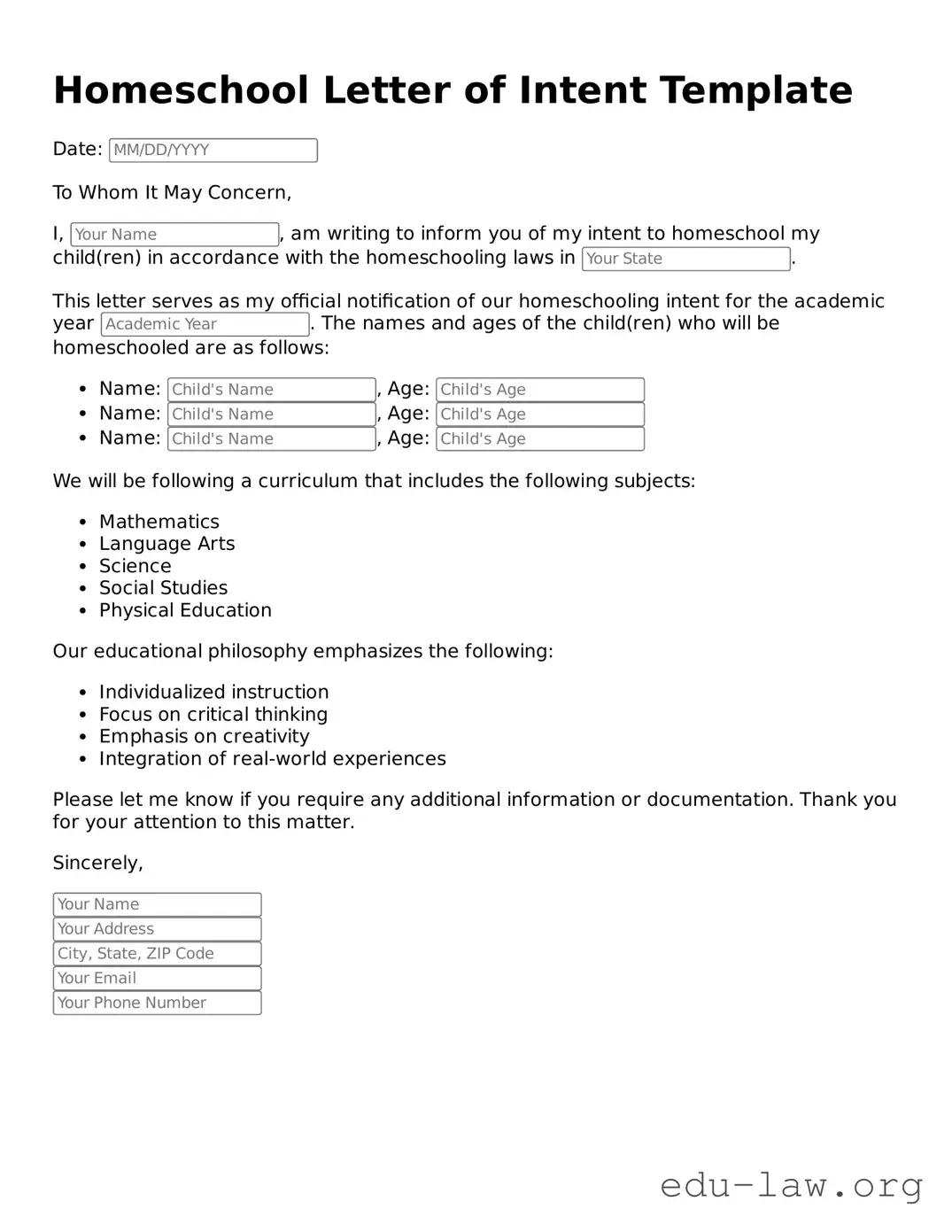The Homeschool Letter of Intent form is similar to the Affidavit of Domestic Partnership. Both documents establish a formal declaration of a particular status or intention. An Affidavit of Domestic Partnership formalizes a couple's partnership in areas where legal recognition plays a role, similar to how the Letter of Intent formalizes a parent's intent to homeschool their child. Both require signatures and may need to be submitted to local authorities or agencies to validate the stated intention or partnership.
Another document that shares similarities is the Child Custody Agreement. Like the Letter of Intent, this agreement outlines important information regarding the care and education of a child. It requires parents or guardians to agree on responsibilities and decisions affecting the child's welfare. In both cases, the documents are intended to promote clarity and understanding concerning a child’s upbringing, ensuring that all parties involved are aware of their roles and commitments.
The Enrollment Form for Private School mirrors the Homeschool Letter of Intent as both serve to notify educational authorities of a student's educational path. In the case of private schools, this form typically includes crucial details about the child, such as their name and the school they will attend. Similarly, a Letter of Intent points out the parent’s choice to educate their child at home. Each document essentially facilitates communication with educational organizations regarding a child's academic direction.
An Individualized Education Plan (IEP) is also comparable, although its focus is on students with specific educational needs. Both documents outline decisions made in the best interests of the student. An IEP defines learning goals and support services for a student with disabilities, whereas the Letter of Intent serves as a precursor to establishing a homeschooling environment. Each is a tool meant to provide clarity about a child's educational journey.
The Education Plan for Charter Schools is another document that shares a common purpose with the Homeschool Letter of Intent. Charter schools often require a detailed plan showcasing how students will be educated. This document signals the parent’s objectives and methods for teaching, somewhat akin to the intent expressed in the Homeschool Letter. Both documents appear as initial steps in organizing a child's educational path, ensuring that authorities understand the student’s arrangement.
The Power of Attorney for a Minor Child is also relevant here. While it primarily allows an individual to make decisions on behalf of a child in specific matters, the underlying principle of ensuring a child's well-being echoes the aims of the Letter of Intent. Parents use both forms to assert their rights and intentions concerning their child's care and education, fulfilling a protective role.
Similar to the above, the Notification of Intent to Withdraw from Public School serves as another document that aligns with the Homeschool Letter of Intent. When parents choose to homeschool, they often submit this notification to inform the school district of their decision. Both documents require a proactive approach to ensure that educational authorities are aware of a change in a child’s academic setting, emphasizing parental rights and responsibilities.
Lastly, the Summer School Registration Form mirrors the intent expressed in the Homeschool Letter of Intent. Though it pertains to a seasonal educational program rather than a long-term commitment, both documents require a parent’s initiative in outlining their child's educational plans. Each serves to communicate important information to educational institutions, facilitating the connection between parents and the educational options available to their children.
